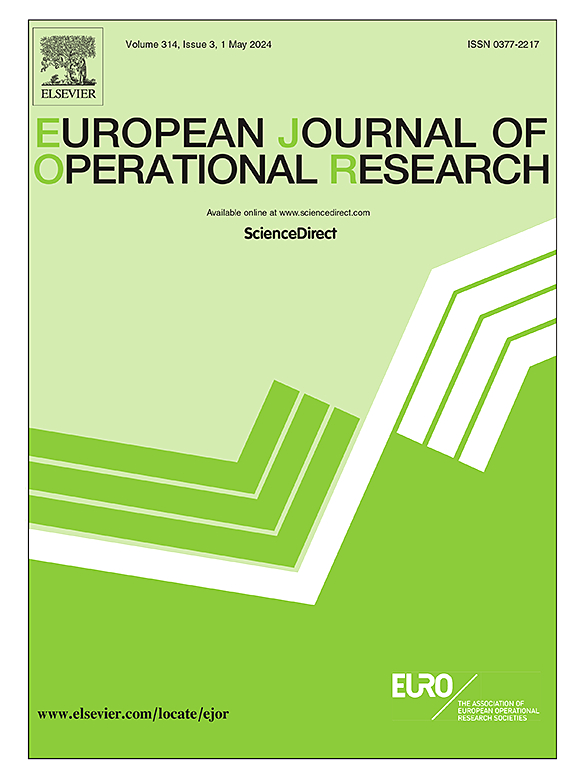Blockchain-enabled quality transparency and invoice tokenization in deep-tier supply chains
IF 6
2区 管理学
Q1 OPERATIONS RESEARCH & MANAGEMENT SCIENCE
引用次数: 0
Abstract
In hierarchical deep-tier supply chains, private quality information in the headstream’s raw materials and financial constraints in the midstream’s product procurement significantly restrict the downstream’s sales and market supply. To address these issues, downstream retailers can implement blockchain technology to trace and transparentize the headstream’s quality information across the chain and finance the midstream by digitizing accounts payable, i.e., invoice tokenization. To investigate how quality information and financing strategies interact, we formulate a multilevel Stackelberg game to analyze a deep-tier supply chain involving a retailer who may adopt blockchain, a tier-1 capital-constrained supplier, and a tier-2 supplier who privately owns quality information and can provide trade credit financing to the tier-1 supplier. Intuitively, blockchain benefits the retailer since transparentizing quality information can attract more purchases. However, we find that this may not be true, especially when the expected quality is relatively low. Interestingly, we find that merely using blockchain-enabled transparency decreases suppliers’ profits, but further incorporating invoice tokenization can benefit them, potentially achieving a triple-win result, although two suppliers’ interests may not always align. Finally, as the expected quality rises, equilibrium results move from trade credit under no blockchain (NT) to trade credit under blockchain-enabled transparency (BT) and then to blockchain-enabled transparency and invoice tokenization (BI) if the price of raw materials is high; otherwise, BI is more likely to be the equilibrium result. Our findings uncover how to utilize blockchain-driven traceability and invoice tokenization strategically.在更深层次的供应链中实现区块链的质量透明度和发票标记化
在层次分明的深层供应链中,上游原材料的私人质量信息和中游产品采购的资金约束严重制约了下游的销售和市场供应。为了解决这些问题,下游零售商可以实施区块链技术,在整个链条上追踪和透明上游的质量信息,并通过数字化应付账款(即发票代币化)为中游提供资金。为了研究质量信息和融资策略是如何相互作用的,我们制定了一个多层次的Stackelberg博弈来分析一个深层供应链,该供应链涉及一个可能采用区块链的零售商,一个一级资本受限的供应商,以及一个私人拥有质量信息并可以向一级供应商提供贸易信贷融资的二级供应商。直观地说,区块链对零售商有利,因为透明的质量信息可以吸引更多的购买。然而,我们发现这可能不是真的,特别是当预期质量相对较低的时候。有趣的是,我们发现仅仅使用支持区块链的透明度会降低供应商的利润,但进一步将发票代币化可以使他们受益,从而可能实现三双赢的结果,尽管两个供应商的利益可能并不总是一致的。最后,随着预期质量的提高,均衡结果从无区块链(NT)下的贸易信贷转移到区块链支持的透明度(BT)下的贸易信贷,然后在原材料价格高的情况下转移到区块链支持的透明度和发票代币化(BI);否则,BI更有可能是平衡结果。我们的研究结果揭示了如何战略性地利用区块链驱动的可追溯性和发票标记化。
本文章由计算机程序翻译,如有差异,请以英文原文为准。
求助全文
约1分钟内获得全文
求助全文
来源期刊

European Journal of Operational Research
管理科学-运筹学与管理科学
CiteScore
11.90
自引率
9.40%
发文量
786
审稿时长
8.2 months
期刊介绍:
The European Journal of Operational Research (EJOR) publishes high quality, original papers that contribute to the methodology of operational research (OR) and to the practice of decision making.
 求助内容:
求助内容: 应助结果提醒方式:
应助结果提醒方式:


